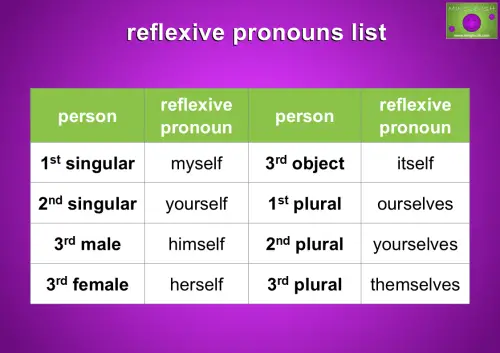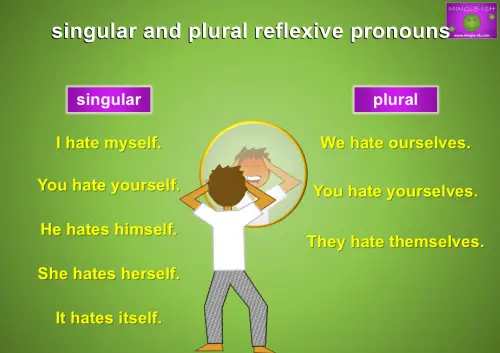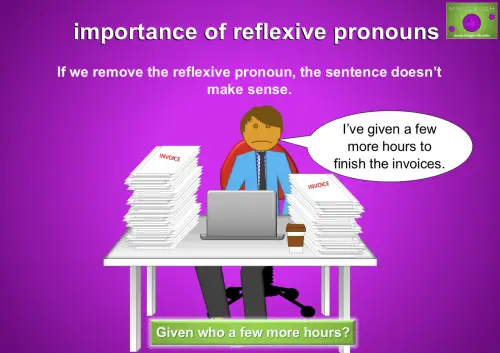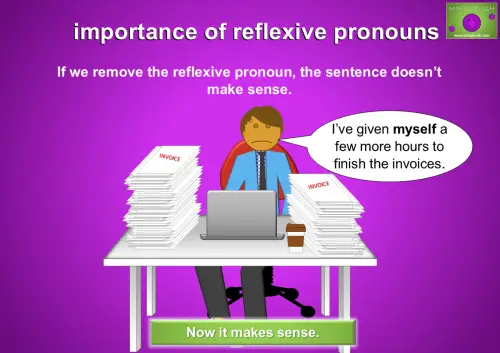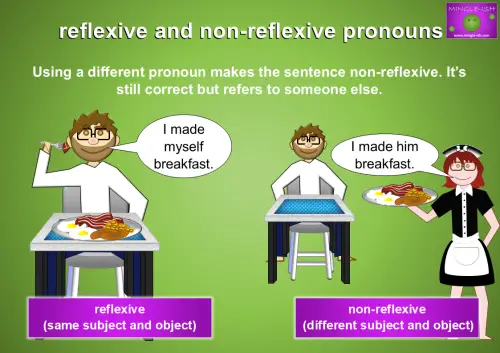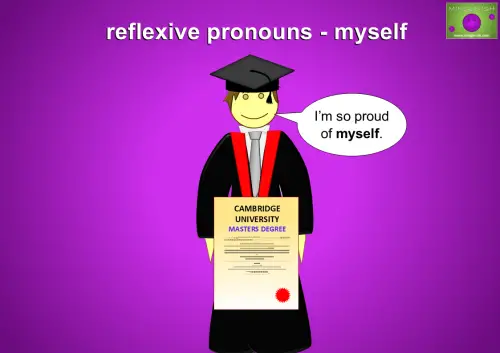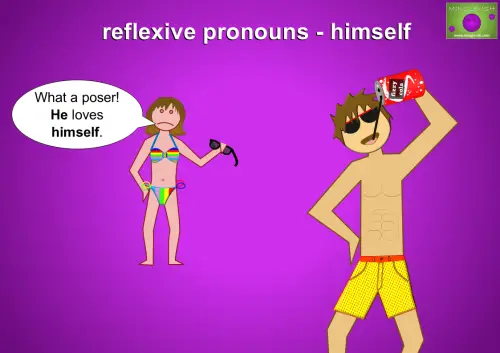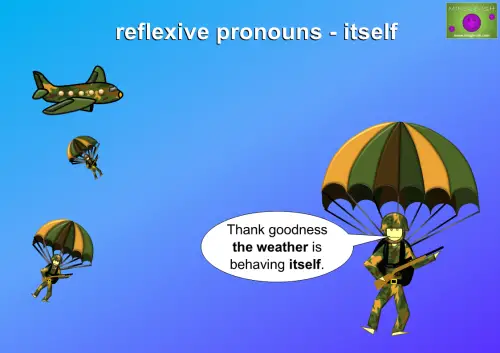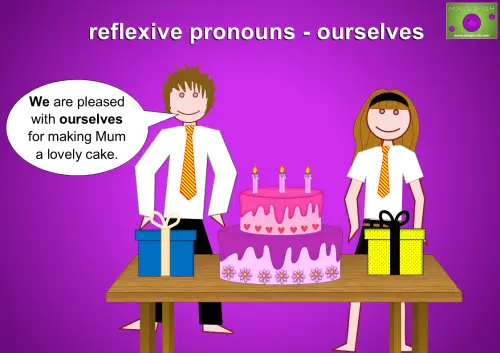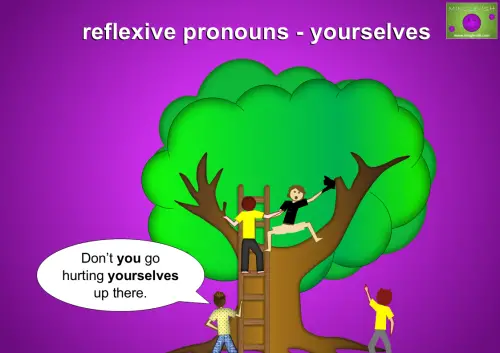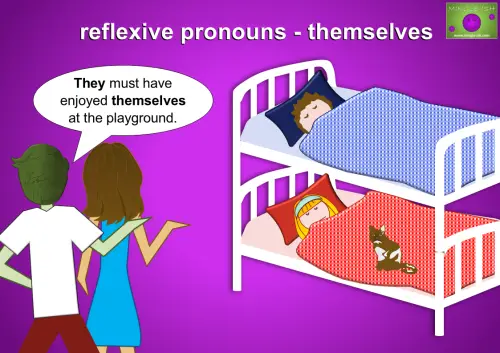Contents
- Reflexive Pronouns – Guide with Examples for ESL Learners
- What is a reflexive pronoun?
- Reflexive Pronouns List
- Singular and Plural Reflexive Pronouns
- Why Reflexive Pronouns Are Essential in a Sentence
- Reflexive and Non-reflexive Pronouns
- Reflexive Pronoun Examples
- Reflexive Pronouns Quizzes
- Explore More Grammar Guides and Quizzes

